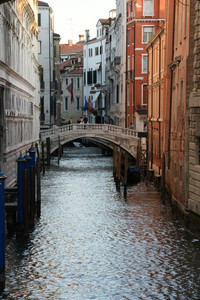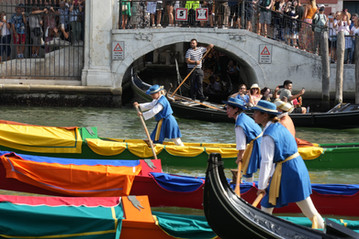VENICE: A BIT OF HISTORY
- chuckmeltzer
- Sep 14
- 3 min read
Updated: Sep 25
We spent three nights in Venice on our way to hike in the Dolomites. This was our second visit to Venice, so we bypassed some typical tourist spots like The Doge's Palace and Murano's glass blowing.





Instead, we explored lesser-known areas of Venice with guides from ToursByLocals, to avoid the crowds. We were informed that the number of tourists we saw was less compared to a few weeks earlier, which is why we prefer traveling after Labor Day. The concept of shoulder season travel isn't as clear as it once was, but we mostly avoided families with kids in this very adult version of Disneyland. Venice's charm lies in its stunning beauty, with its 438 canals and bridges, and buildings dating back to the 8th century.


Magical is probably the most used adjective to describe Venice and that is because it is magical. Where else do you find beautiful old historic palazzos connected by canals or stone paved walkways? There is no new construction in Venice, only renovations of existing structures.
There are no cars or bicycles, just pedestrians and gondolas, ferries, and water taxis in the canals. Streets are cleaned with brooms in the early morning; no leaf blowers! Also absent are the sounds of sirens, car alarms, and the usual city noise.

Venice is built on 118 islands in the Venetian Lagoon. Its origin dates back to 421 AD when early inhabitants fled the Huns. It became a major banking and maritime power during the Middle Ages and Renaissance. Silk, grain, and spices were key components of its commerce. The sovereignty ended in 1797 at the hands of Napoleon. Napoleon was seen as somewhat of a liberator by the city's Jewish population. He removed the gates of the Ghetto and lifted restrictions on where Jews could live and travel in the city. Unfortunately, that did not prevent the Nazis from slaughtering Venetian Jews in WWII.


There were twelve founding families who elected the first of 117 doges in 697 AD. "Doge" is the Venetian dialect for leader. Charlemagne briefly placed his son, Pepin, in charge of Venice in 810, but his army and eventually he himself succumbed to disease.
I won't bore you with much more history. It's important to note that Venice became closely linked with Constantinople, evident in its architecture and cuisine.
The city was one of the largest in Europe during the High Middle Ages, with a population of 60,000 in AD 1000; 80,000 in 1200; and rising to 110,000–180,000 in 1300. In the mid-1500s, the population was 170,000, and by 1600 it approached 200,000. The population in the historic old city declined much faster: from about 120,000 in 1980 to about 60,000 in 2009 and to 50,000 in 2021.
Tourism has been a significant part of Venice's economy since the 18th century, when Venice – with its stunning cityscape, uniqueness, and rich musical and artistic cultural heritage – became a stop on the Grand Tour. Today, it is renowned for the Biennale and the Venice Film Festival. We happened to be in town at the same time as the film festival, but somehow did not connect with George or Julia. On the other hand, we did get front row canal for the annual regatta in which many of the gondolas are decorated and the rowers are in traditional garb.
Many Renaissance masters painted in Venice, including Tintoretto, Titian, Veronese, Bellini, Canaletto, and Tiepolo. Marco Polo and Vivaldi hailed from Venice. Much literature is set in Venice, with highlights including Shakespeare's "Merchant of Venice," Voltaire's "Candide," Henry James's "The Wings of the Dove," and Thomas Mann's "Death in Venice." Movies set in Venice include "Summertime" with Katharine Hepburn, "Death in Venice," "Spider-Man: Far from Home," "Indiana Jones and the Last Crusade," and "Casino Royale."










































Comments